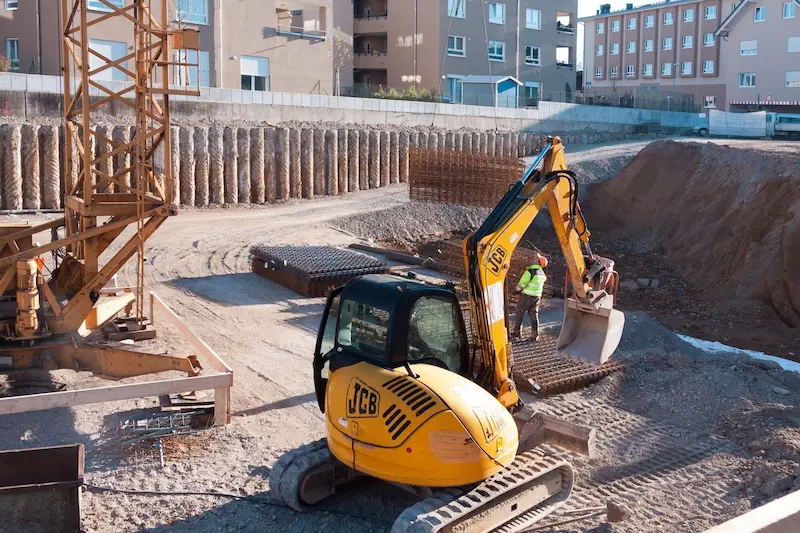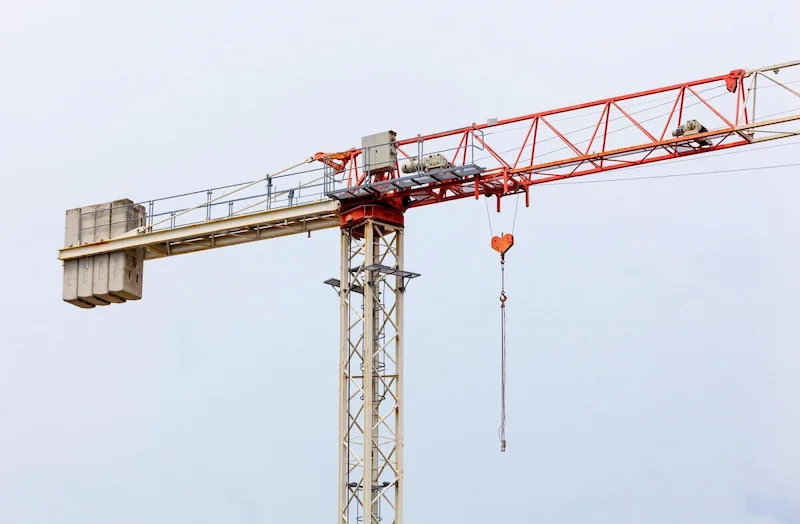Table of Contents
Construction projects often involve complex tasks that require precise coordination and the right set of tools. Efficient heavy lifting accelerates project timelines, enhances safety and reduces costs. Selecting the appropriate equipment is fundamental to achieving these goals. This blog explores seven key pieces of heavy-lifting equipment that can significantly boost your construction project’s efficiency.
Cranes: Types and Uses
Cranes are indispensable on construction sites, offering unparalleled lifting capabilities that make them essential for a wide range of tasks. They come in various forms, each meticulously designed and engineered to perform specific tasks that cater to the diverse needs of construction projects. Tower cranes, for instance, are towering structures often seen on the skyline of urban areas. They are commonly used for building high-rise structures, providing the necessary height and reach to transport heavy materials to great heights, which is crucial for the construction of skyscrapers and other tall buildings. Mobile cranes, on the other hand, are highly valued for their flexibility. These cranes are mounted on wheeled vehicles, allowing them to move effortlessly around the site and adapt to different lifting tasks as needed, making them ideal for projects requiring agility and versatility. Crawler cranes, equipped with robust tracks instead of wheels, are perfect for rough and uneven terrains. Their tracks provide both stability and mobility, enabling them to navigate challenging landscapes without compromising on balance or performance.
Boom Lifts: Reaching New Heights
Boom lifts are specialized equipment designed to provide elevated access for various construction tasks. These machines consist of a platform or bucket attached to a long arm, allowing workers to reach heights that are otherwise difficult to attain. The boom lift equipment is invaluable for tasks such as installing windows, painting tall structures, or performing maintenance on elevated areas. Available in different types, including telescopic and articulating models, boom lifts offer unique advantages based on the project’s requirements. Boom lifts boost productivity and broaden the range of tasks on construction sites by providing safe and efficient access to elevated work areas.
Forklifts: Versatility on Site
Forklifts are versatile machines known for their ability to handle a wide range of tasks in construction settings. These powerful vehicles are primarily used for transporting materials over short distances, stacking supplies neatly, and moving heavy loads within the site efficiently. Forklifts come in various configurations, including electric, diesel-powered, and even propane models, each suited to different environments and operational needs. Electric forklifts, for instance, are ideal for indoor use due to their zero emissions and quieter operation, while diesel-powered models are preferred for outdoor tasks requiring more power. Rough terrain forklifts are specifically designed to navigate uneven surfaces, making them ideal for construction sites with challenging landscapes or unfinished ground. Their large, robust tires and enhanced suspension systems enable them to traverse difficult terrain with ease. The adaptability and reliability of forklifts make them a valuable asset in maintaining the steady flow of materials, thereby enhancing overall project efficiency and contributing to timely project completion.
Hoists: Reliable Material Handling

Hoists are essential tools for lifting materials vertically, particularly in confined spaces where other machinery might not be feasible due to size constraints or limited access. These devices are commonly used in construction and industrial settings for tasks such as lifting beams, steel sections, and other heavy components into place with precision. There are various types of hoists available, including manual, electric, and pneumatic versions, each offering unique advantages. Electric hoists provide precise control and are particularly beneficial for tasks requiring exact positioning, while pneumatic hoists are suitable for environments where there is a risk of explosion, as they don’t produce sparks. Properly integrating hoists into construction projects ensures that materials are lifted safely and accurately, thereby reducing the risk of accidents and ensuring that construction progresses smoothly without unnecessary interruptions.
Telehandlers: Multifunctional Lifting Solutions
Telehandlers, or telescopic handlers, combine the functionalities of forklifts and cranes, making them highly versatile on construction sites. They feature a telescopic boom, which allows for extended reach and greater lifting heights. Telehandlers are equipped with various attachments, such as buckets, forks, and winches, enabling them to handle a wide range of materials and tasks. Their ability to navigate tight spaces and uneven terrains makes them ideal for projects that require flexibility and adaptability. Telehandlers offer versatile lifting solutions that streamline operations by minimizing the need for multiple pieces of equipment, thereby enhancing overall site efficiency.
Excavators: Power and Precision
Excavators are powerful machines used primarily for digging and earthmoving tasks, but their role in heavy lifting should not be underestimated. Equipped with hydraulic systems, excavators can handle substantial weights with precision, making them suitable for tasks such as lifting heavy materials, demolition, and site preparation. Their versatility is further enhanced by the availability of various attachments, including grapples, breakers, and lifts, which expand their functionality beyond excavation. Excavators’ ability to perform multiple tasks efficiently makes them a cornerstone of many construction projects, contributing to faster completion times and reduced labor costs.
Material Handling Systems: Streamlining Operations
Material handling systems encompass a range of equipment and processes designed to move, store, and control materials throughout the construction site. These systems include conveyors, automated guided vehicles (AGVs), and storage solutions that work together to ensure a seamless flow of materials from delivery to installation. Effective material handling systems minimize bottlenecks, reduce manual labor, and enhance the overall efficiency of construction operations. Integrating these systems into your project enhances organization, reduces the risk of material damage, and ensures resources are available precisely when and where they are needed most.
Efficient heavy lifting is fundamental to the success of construction projects, impacting timelines, safety, and costs. By leveraging the right equipment—such as cranes, forklifts, hoists, boom lifts, telehandlers, excavators, and comprehensive material handling systems—you can significantly enhance project efficiency. Each piece of machinery plays a specific role, contributing to the smooth progression of tasks and ensuring that heavy materials are managed safely and effectively. Investing in and properly utilizing these essential tools streamlines operations and sets the foundation for successful project completion. As the construction industry continues to evolve, staying equipped with the right heavy-lifting machinery will remain a key factor in achieving excellence and maintaining a competitive advantage.
Want to explore something different? Tips for Safe Installation of Smart Lighting in Workshops

